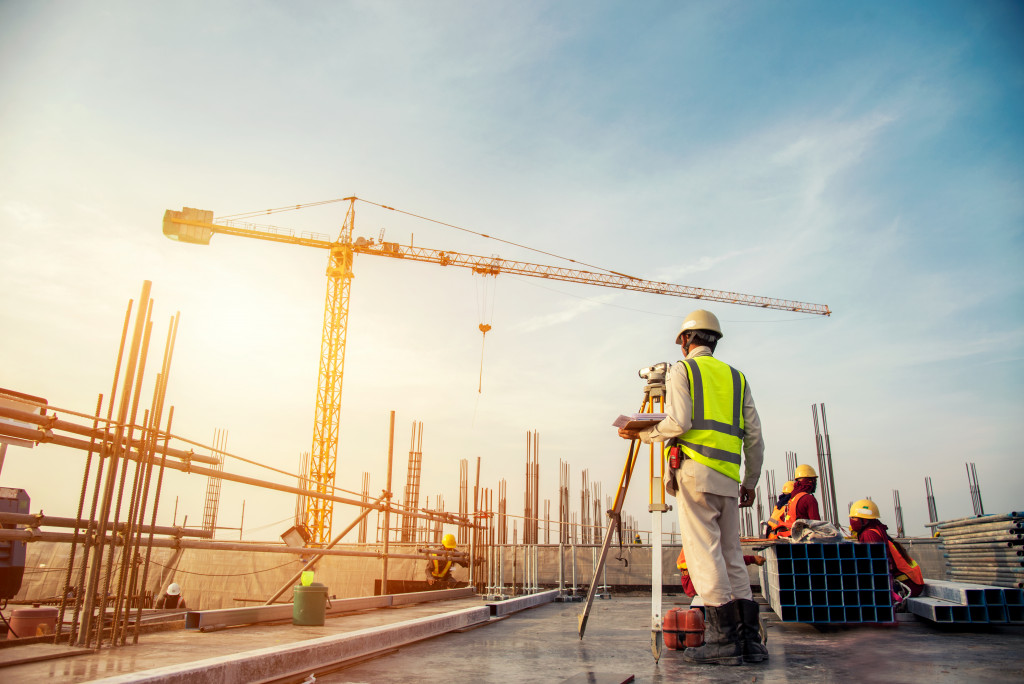- Construction technology streamlines work processes, reduces costs, and increases efficiency in real estate projects.
- Cranes, including crawlers, rough terrain, and self-erecting tower cranes, are integral to successful construction projects.
- Drones and aerial imaging provide critical insights into project progress, site safety, and precise surveying.
- Inspection software and AI-powered programs help detect defects and safety hazards early, preventing costly corrections.
- Robotics, such as bricklaying and concrete pouring robots, improve safety and speed while reducing construction costs.
The real estate industry has transformed over the years, with technological advancements integral to construction projects. Construction technology has become essential with an increasing demand for efficiency and effectiveness in the building process. In today’s world, new construction technology offers automated building processes, precision measurement methods, and effective project management techniques.
Technology and machinery have become quintessential in contemporary real estate construction. For instance, using construction equipment and automation software improves the efficiency of work processes and reduces manual labor costs.
By combining technology and machinery in construction, project managers can deliver top-tier results while saving on costs. Modern technologies such as drones and aerial imaging, site surveys, progress monitoring, inspections, robotics, and automation have revolutionized the construction industry.
Cranes: Lifting Innovation in Construction
Cranes are an essential part of any construction project, especially high-rise buildings. They are intended to lift materials and equipment to high elevations, which is impossible for traditional construction machinery. Some popular types of cranes are:
Crawler Crane
A crawler crane is ideal for a project that needs a strong and stable crane that can be used on different surfaces. They come with robust engines and can easily move large objects.
Being highly adaptable, crawler cranes are popular in complicated real estate projects and highly efficient under challenging terrains. The only downside is that they must be assembled on-site, which can be time-consuming and labor-intensive.
Rough Terrain Crane
Rough-terrain cranes are intended to move on unstable and rugged terrain. It comes with thicker four-wheel drive tires that increase their maneuverability with superb acceleration and make them a sturdy choice for jobs that include mud, sand, and rocks.
The rough-terrain crane can tremendously impact material movement projects with a maximum lift capacity of 600 tons.
Self-Erecting Tower Crane
A self-erecting tower crane is designed to make contractors’ lives more comfortable. They are compact, efficient, and save time and money. They can easily move around tight spaces but are still huge in lifting capacity. It offers the ability to deliver concrete, erect steel, and move equipment with just one rig.
It is also ideal for small to medium-sized projects. Utilizing a reliable self-erecting tower crane can reduce costs, save time, and increase productivity since it requires minimal manual labor and can be assembled and disassembled within a day.

Drones and Aerial Imaging
Drones have revolutionized the construction industry, and aerial imaging is one of the most significant developments. It can capture high-definition aerial images that give construction supervisors an overview of project progress and site safety.
One of its critical uses includes:
Site Surveys
Site surveys are crucial to the construction process. Innovative surveying technology, such as LIDAR (Light Detection and Ranging) and GPS (Global Positioning System), is necessary to ensure accuracy and optimize construction.
LIDAR utilizes a rotating laser to produce an exact three-dimensional model of the construction site, while GPS helps establish precise location data to ensure an accurate project foundation.
Progress Monitoring
Construction project managers frequently use construction management software programs to monitor project progress. Construction management software is helpful because it provides the following:
- Real-time access to project status.
- Tracking time and materials.
- Changing plans on the fly.
Inspections
Inspections are a crucial part of any construction project because they help identify problems before they escalate to become an expensive mistake. Technological advancements have enabled AI-powered software programs to detect construction defects and safety hazards. Software programs perform automated checking and can identify anomalies, reducing the risk of errors and the time required to perform inspections.
Robotics and Automation
Robots have drastically altered the way buildings are constructed. They can operate 24/7, improve worker safety, and increase the precision and speed of construction processes. Additionally, robotics can perform tasks such as:
Bricklaying
Bricklaying is a labor-intensive task that is increasingly being carried out by robots. Robotic bricklaying has revolutionized the process and has significantly reduced construction costs. Robotic bricklayers have the precision and speed necessary to lay bricks in a fraction of the time taken by human labor.
Concrete Pouring
Advanced technology, such as smart concrete, can significantly improve the durability of structures. Innovations like autonomous trucks can enhance safety and efficiency in concrete pouring.

Construction technology has revolutionized the way the real estate industry approaches construction projects.
Advanced systems that use drones and aerial imaging, LIDAR, GPS monitoring, construction management software, inspection software, robotics, and automation have significantly improved construction quality while increasing speed and efficiency.
As a result, these technologies will be essential for all seamless real estate projects in the future.

